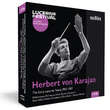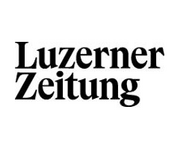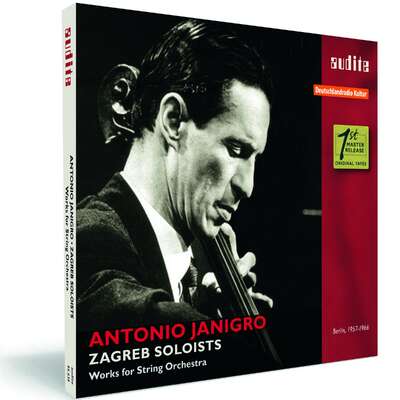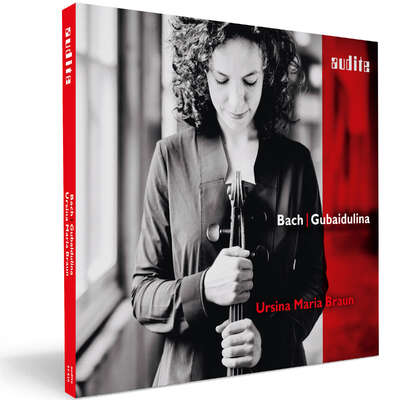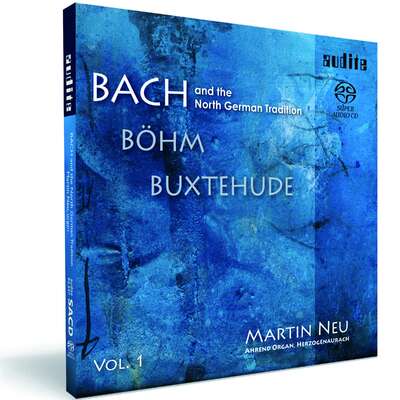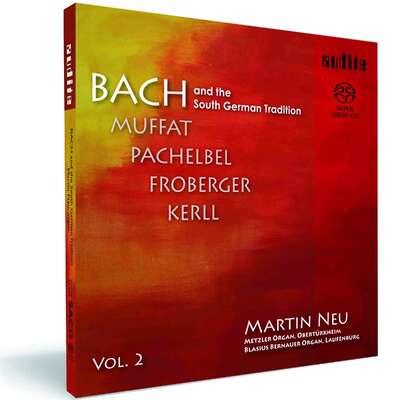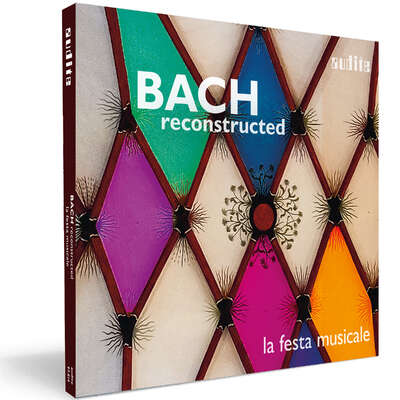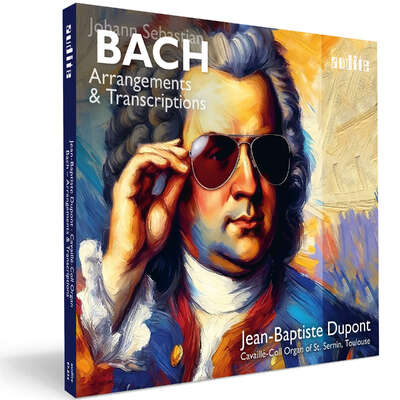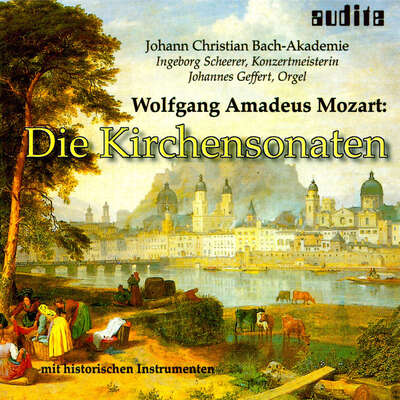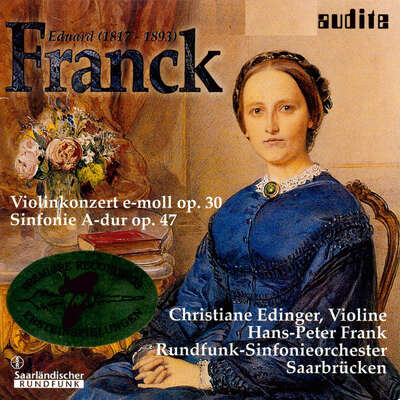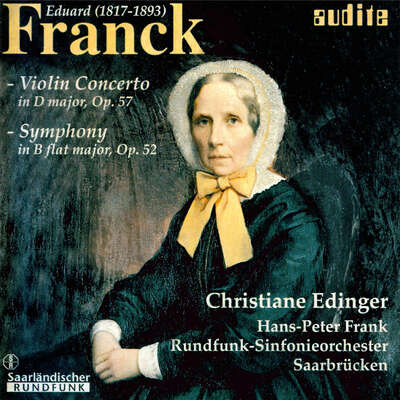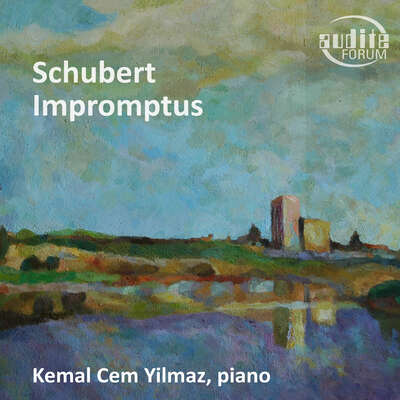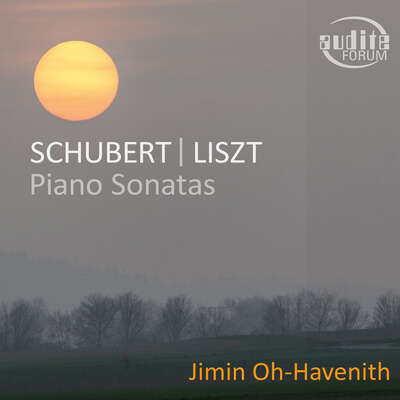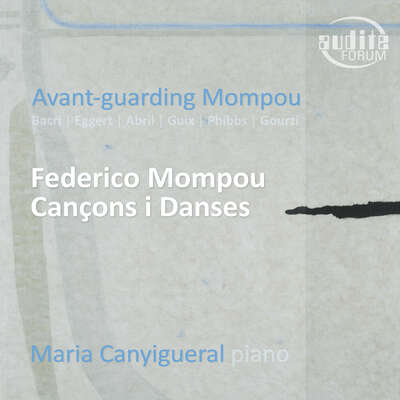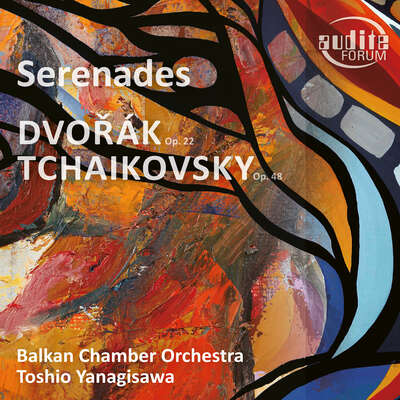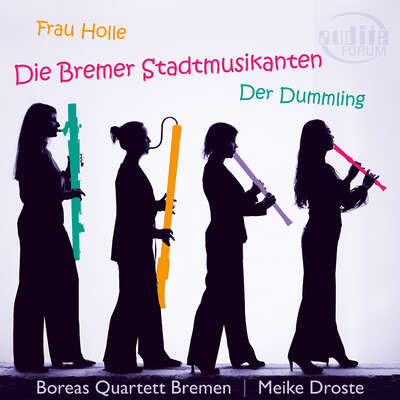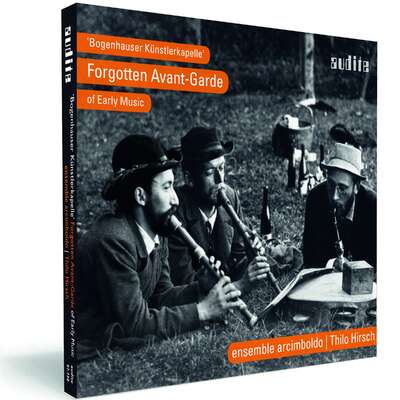
Auto-Rip
For four decades, from 1948 to 1988, Herbert von Karajan was one of Lucerne Festival’s defining artists. Now available for the first time are his early Lucerne live recordings from the 1950s, when Karajan was rebuilding his career: works from Bach to Honegger in thrilling, rhythmically tight interpretations, conscious of form. He is joined by famous soloists such as Clara Haskil and Géza Anda, Robert Casadesus and Nathan Milstein.more
"Immediacy, energy and passion [...] For those wanting to delve more deeply into the maestro’s postwar rise to the top, this is essential listening." (Europadisc)
Track List
This bonus track is only available as a download!
Details
|
Herbert von Karajan - The Early Lucerne Years
LUCERNE FESTIVAL Historic Performances, Vol. 19 |
|
| article number: | 21.464 |
|---|---|
| EAN barcode: | 4022143214645 |
| price group: | BCT |
| release date: | 8. September 2023 |
| total time: | 351 min. |
Bonus Material
Informationen
For the first time, this edition makes available Herbert von Karajan's previously unreleased early live recordings from the Lucerne Festival, made in a decade during which Karajan was rebuilding his career. Included are legendary soloists such as Clara Haskil and Géza Anda, Robert Casadesus and Nathan Milstein.
The Internationale Musikfestwochen Luzern (today's Lucerne Festival) was the first promoter outside Austria to engage Herbert von Karajan after his performance ban and denazification proceedings, thus enabling him to return to international podiums. "I will always be indebted", Karajan later confessed. For almost four decades, from 1948 to 1988, he was to make his mark on Lucerne Festival. His annual appearances with the Berlin Philharmonic (from 1958) enjoyed cult status. But already in the decade before, as documented by this edition, Karajan enthused audiences and critics alike in Lucerne and quickly rose to become the defining artistic personality alongside Wilhelm Furtwängler: he conducted the Philharmonia Orchestra and the Vienna Symphony Orchestra, but above all the Swiss Festival Orchestra, whom he held in high esteem and with whom he performed a total of nine concerts.
The surviving Lucerne live recordings range from Bach's C major Concerto for two Keyboards, BWV1061 (with Clara Haskil and Géza Anda), to Arthur Honegger's Symphonie liturgique. The exciting, rhythmically tight interpretations show Karajan to be an extremely form-conscious, textually faithful conductor of great expressive power. He inspires his orchestras to deliver top performances, whilst also acting as a sensitive yet extremely present accompanist, as for instance in Brahms' Violin Concerto with Nathan Milstein, or in Mozart's dramatic C minor Concerto, K. 491, with Robert Casadesus.
As a digital bonus, the edition also includes Bach's Mass in B minor, which Karajan celebrated at the end of the 1951 festival with the Vienna Symphony Orchestra, the Vienna Singverein and a top-class quartet of soloists (Elisabeth Schwarzkopf, Elsa Cavelti, Ernst Haefliger and Hans Braun): a fascinating sonic document thanks to Karajan's very personal approach, even if stylistically it feels far removed.
The sound of the live recordings on the 3-CD box set has been carefully restored. The 62-page booklet in three languages contains essays by Wolfgang Rathert and Erich Singer on Karajan's career re-launch during the post-war years and on his special relationship with Lucerne Festival. It also contains numerous previously unpublished photos.
Reviews
Crescendo | 15. Mai 2024 | Ilaria Heindrich | May 15, 2024 | source: https://crescend... Vergessene Schätze
Das Label audite hat es sich anlässlich seiner zehnjährigen Kooperation mit dem Lucerne Festival nun zur Aufgabe gemacht, unbekannte Schätze der Jahre 1952–1957 aus dem Fundus des Musikfestival-Archivs zu schöpfen.<br /> Ein Muss für jeden Sammler!Mehr lesen
Ein Muss für jeden Sammler!
Classica – le meilleur de la musique classique & de la hi-fi | N° 262 - Mai 2024 | Yannick Millon | May 1, 2024
Karajan met le feu au lac<br /> <br /> Entre sa première apparition sur les bords duMehr lesen
Entre sa première apparition sur les bords du
ET SONA - HIFI & MÚSICA | April 2024 | Fernando Alday | April 22, 2024 | source: https://www.et-s... Grabación ganadora de la categoría "Grabaciones Históricas" de la ICMA
La más reciente edición de los International Classical Music Awards (ICMA), fue celebrada el pasado 12 de abril en el Palau de la Música, deMehr lesen
Se trata de una compilación en 3 CD's que aborda la obra del conductor en el marco del más importante Festival de musica clásica del mundo en la época cumbre de su carrera, habiendo sido nombrado conductor principal de la Filarmónica de Berlin en 1956.
Durante 4 décadas von Karajan fue uno de los personajes imperdibles del festival. Esta compilación, nunca antes editada, rescata interpretaciones magistrales del conductor durante la época de reconstrucción de su carrera tras la Segunda Guerra Mundial.
En la compilación es posible encontrar, repartidos en 3CD, temas de grandes compositores como Beethoven, Mozart, Brahms, Bach o Honegger. Todos ejecutados con el brío, la maestría y el particular estilo del polémico director.
Como mencionaba al inicio de esta entrada, esta compilación ha sido galardonada por la prestigiosa International Classical Music Awards (ICMA) como mejor grabación histórica. La consideran una pieza fundamental para entender el elevado estatus que alcanzaría el Director en los años posteriores.
Para los seguidores de von Karajan y, de la música clásica en general, esta compilación será una pieza central de su colección.
Se encuentra disponible en formato CD y descarga digital a través de la web de audite.
Diapason | N° 732 - Avril 2024 | Patrick Szersnovicz | April 1, 2024 Un style nouveau
Sept interprétations, issues de quatre concerts donnés à Lucerne par Herbert von Karajan entre 1952 et 1957, apportent un éclairage passionnantMehr lesen
Sur près de six décennies d'activité, le style de direction de Herbert von Karajan n'a cessé d'évoluer, sans que ses principales caractéristiques ne se soient métamorphosées en un jour. C’est un pari audacieux que fit le producteur de disques Walter Legge en confiant en 1948, à ce chef austrichien – en vue sous le Troisième Reich et qui vient tout juste d'être « dénazifié » – le poste de chef permanent du Philharmonia Orchestra, fondé trois ans plus tôt pour alimenter les enregistrements en studio de His Master's Voice. Un poste qu'il quittera en 1955 pour prendre les rênes des Berliner Philharmoniker.
Le jeune chef, fougueux, toscaninien, parfois exagérément emporté des années 1930 va se transformer, la quarantaine venant, en un maître précis et rigoureux. Champion de la clarté structurelle, de la ligne intérieure, ce virtuose de la baguette à la fois énergique et souple, cultive les timbres jusqu'à l'extrême, sans verser encore dans l'excès de legato ou dans l'art du fondu-enchaîné qu'on a pu lui reprocher par la suite. C'est cette mue progressive, la naissance de ce nouveau style qu'illustrent les témoignages captés sur le vif et pour la plupart inédits que le label audite a dénichés dans les archives du festival de Lucerne. Les rencontres avec de grands solistes que trois de ces sept documents nous offrent sont toutes palpitantes de fluidité.
Karajan apporte un soutien discret et chaleureux à la pureté de diction et à la large respiration du duo formé en 1955 par Clara Haskil et Geza Anda dans le Double Concerto BWV 1061 de Bach. En 1952, avec Robert Casadesus, limpide et altier dans un Concerto n° 24 de Mozart souvent sombre et amer, c'est l'osmose, intense, habitée. Impérial mais nullement marmoréen, le violoniste Nathan Milstein déploie en 1957 dans le Concerto en ré de Brahms une ligne flamboyante, tandis que le chef cisèle des phrasés plus homogènes qu'impulsifs, tout en alliant intimisme du discours et élans traversés du grand souffle.
Tension et lumière
L'Orchestre du Festival, cependant, ne peut rivaliser avec le niveau du Philharmonia. Le chef transcende les quelques infimes carences de la formation helvète (dans les trois concertos et dans une Symphonie n° 8 de Beethoven à la puissance rythmique quasi stravinskienne), et magnifie les couleurs dionysiaques et f ruitées de la phalange londonienne (dans une « Pastorale » idéalement lumineuse er chambriste et une Symphonie n° 4 de Brahms époustouflante d'énergie, de tension dramatique).
Mais le plus précieux de ce coffret reste sans doute la Symphonie « Liturgique » de Honegger captée le 10 août 1955. Même s'il dirige l'Orchestre du Festival, Karajan n'est pas loin d'y surpasser son enregistrement à la tête des Berliner. Chef lyrique autant que symphonique, il restitue ici à I’oeuvre une dramaturgie implacable à laquelle personne ne peut littéralement échapper. Saisissante, cette vision traduit avec transparence et force la partition dans toute sa vérité et son individualité expressive.
ClicMag | N° 124 - Mars 2024 | Jean-Charles Hoffelé | March 1, 2024
Les documents réunis dans ce trop bref coffret pour audite sont pour certains déjà connus [...] mais aucun n’avait bénéficié d’un transfert effectué avec un tel soin d’après les bandes originals, qui donne aux documents rassemblés ici ce relief saisissant. Mehr lesen
International Classical Music Awards | ICMA 2024 | January 18, 2024 | source: https://www.icma... ICMA-WINNER "HISTORICAL RECORDINGS"
How a star is born? The collection “Herbert von Karajan – The early Lucerne years” gives a possible answer, regarding one of the symbols of theMehr lesen
Deutsche Übersetzung:
Wie wird ein Star geboren? Die Sammlung "Herbert von Karajan - Die frühen Luzerner Jahre" gibt eine mögliche Antwort auf die Frage nach einem der Symbole der Dirigierkunst im 20. Jahrhundert. Die Internationalen Musikfestwochen Luzern, später Lucerne Festival, gaben 1948 Herbert von Karajan eine Chance. Es war sein erstes Konzert außerhalb Deutschlands, nach der Entnazifizierung. Seine Beziehung zum Schweizer Festival entwickelte sich im Laufe der Zeit; diese Aufnahmen aus den Jahren 1952-1957, die zum ersten Mal auf CD veröffentlicht wurden, zeigen uns einen jungen, sehr talentierten und leidenschaftlichen Dirigenten in wunderschönen remasterten Produktionen, die das ursprüngliche Live-Gefühl und die Energie bewahren. Eine echte Entdeckung!
Musik & Theater | Jg. 45 Januar / Februar 2024 | Reinmar Wagner | January 1, 2024 Frühe Karajan-Jahre
Beethoven und Brahms klingen hier beschwingt und tänzerisch frisch [...] Besonders schön: Nathan Milstein mit dem Brahms-Konzert.Mehr lesen
klassik.com | Montag, 11. Dezember 2023 | Dr. Kevin Clarke | December 11, 2023 | source: https://magazin.... Neustart nach der Entnazifizierung
Wer sich für Karajans Werdegang interessiert und gerade die entscheidenden Nachkriegsjahre besser kennenlernen will, für den sind diese drei CDs lohnend.Mehr lesen
Gramophone | December 2023 | Rob Cowan | December 1, 2023
Box-Set Round-up
Rob Cowan revisits great recordings of the passt from four conductors and a pianist
[…] Maazel was in general a less consistent recording artist than Herbert von Karajan and yet, having said that, I’ve always been in two mindsMehr lesen
www.musicweb-international.com | OCTOBER 22, 2023 | Jonathan Woolf | October 22, 2023 | source: https://www.musi...
In the wake of von Karajan’s denazification in October 1947, it was important for him to resume international engagements. One such presentableMehr lesen
The first disc has two concertos and a symphony. I can’t say I’m much of a fan of Karajan’s Beethoven No 8 (16 August 1952) which I find disagreeably beefy, Karajan presumably attempting to vest the music with rugged dynamism. Despite a well characterised Menuetto I find those lower strings a bit of a congealing mess. Robert Casadesus in Mozart’s Concerto No 24 in C minor, K491 plays his favourite of the composer’s concertos with the elegance familiar from his 78 set with Eugène Bigot in 1937. His scrupulous musicality may seem a mite small-scaled to some but I find it tremendously winning, Casadesus reserving weight for the optimum moments. The Bach was recorded on 10 August 1955 and was reissued on audite 95650 only last year. One can hardly go wrong with Haskil and Anda unless aural congestion is the enemy – which it isn’t here – and the two make significant hay with the exchanges in the finale. The two pianists recorded the concerto commercially around this time in London with Alceo Galliera.
The second disc was recorded on 6 September 1956. Karajan brough the Philharmonia Orchestra from London and the recording quality, as well as the performances, improve too, not that the Swiss Festival Orchestra was poor. There is, however, a tangible increase in finesse and intensity for Beethoven’s Pastoral and Brahms’ Fourth Symphony. The Philharmonia’s winds are on notable form and reflect something, perhaps, of Klemperer’s influence as modified by Karajan in favour of a more emollient tonal balance. Nevertheless, there is considerable clarity, and the Scene by the Brook moves evocatively at a fine tempo (not too slow). The storm is trenchant and dramatic. Karajan’s Brahms performance is slightly more elastic than his 1957 LP, but is otherwise as lucid, powerful and well-balanced. His tempo modifications are organically convincing and the vistas he summons up are full of grandeur. The richness of the finale, with its funereal-tragic element nakedly audible, is utterly splendid.
The third CD is balanced between Brahms’ Violin Concerto with Nathan Milstein (17 August 1957) and Honegger’s Symphony No 3, the Liturgique which was performed on the same evening as the Bach Concerto for two pianos. Milstein is his sovereign self and though he was an inconsistent, sometimes unconvincing exponent of the sonatas, he was invariably convincing in the concerto no matter who the collaborator was. There seems to have been mutual respect between the two men but it’s also clear that Karajan was in no position to impose any conceptual interpretation on the violinist who takes his habitual tempi throughout, tempi he took with Fistoulari, Steinberg and Jochum or in any of the live performances that have emerged such as those directed by Kletzki or Dorati. Only a great musician like Milstein can play at relatively fast tempi but sound unhurried.
Karajan made a famous LP of Honegger’s Symphony in the early 70s, coupling it with No 2. However, it was only a decade old in 1955 when he performed it in Lucerne at tempi somewhat tighter than he was later to take in Berlin. The tensions of a live concert however bring their own reward and the sense of visceral intensity in the first movement, and the controlled Dona nobis pacem finale, are more than merely admirable. The central De profundis clamavi may lack Berlin’s silken strings, and the sense of clarity they brought, but the Swiss Festival Orchestra’s directness is vivid and moving. If you find Serge Baudo’s Czech Philharmonic performance too intense, then Karajan has always offered a rather different perspective on Honegger.
This box is excellently documented, and the recordings come directly from the original 15-inch broadcasting tapes. The repertoire is hardly earth-shattering, and I don’t much like the Beethoven Eighth, but with two orchestras at his disposal, elite soloists and a span of six years this is a valuable addition to the recorded legacy of even so supposedly over-documented a conductor as Karajan.
Audiophile Audition | Oct 16, 2023 | Gary Lemco | October 16, 2023 | source: https://www.auda...
The 62-page illustrated booklet, with a candid appraisal of both Karajan’s career and his relationship to the Lucerne Festival by Wolfgang Rathert is entirely commendable. We can hope that audite, in cooperation with the Lucerne archives, will issue more of such significant musical collaboration.Mehr lesen
De Gelderlander | 14-10-2023 | Maarten-Jan Dongelmans | October 14, 2023 | source: https://www.geld... Opnamen uit Luzern halen Karajans ‘Zwitserse jaren’ weer even heel dichtbij
Ook heel apart is de kans om twee piano-iconen uit de jaren vijftig en zestig te horen in een Dubbelconcert van Bach (BWV 1061). Clara Haskil en Géza Anda leveren voor die tijd prima uitvoeringen af. Net als Robert Casadesus in het lekker fel gespeelde Pianoconcert nr. 24 in c, KV 491 van Mozart.Mehr lesen
Luzerner Zeitung
| Samstag, 14. Oktober 2023 | Fritz Schaub | October 14, 2023
Als das viel beschworene «Wunder Karajan» Luzern eroberte
Erstmals dokumentiert Lucerne Festival mit historischen Aufnahmen, wie der Dirigent ab 1947 in Luzern seine Karriere neu aufbaute
Das 62-seitige dreisprachige Begleitheft enthält nicht nur zwei informative Aufsätze von Wolfgang Rathert und Erich Singer zu Karajans Karriere-Neustart, sondern eine ganze Reihe von bislang unveröffentlichten Fotos.Mehr lesen
Zofinger Tagblatt | 13.10.2023 | Fritz Schaub | October 13, 2023 | source: https://zofinger... Als das «Wunder Karajan» Luzern eroberte: Frühe Aufnahmen von den Musikfestwochen
Erstmals veröffentlicht Lucerne Festival historische Aufnahmen mit HerbertMehr lesen
Crescendo Magazine | Le 1 octobre 2023 | Pierre Jean Tribot | October 1, 2023 | source: https://www.cres...
JOKER PATRIMOINE
Karajan à Lucerne, la construction du mythe
Tout est magistral dans cette interprétation : l’élégance et la fluidité du pianiste, aspects sur lesquels Karajan peut tisser un accompagnement attentif aux moindres nuances et d’un naturel confondant. C’est l'évidence de la musique qui se déroule ici.Mehr lesen
www.amazon.de | 22. September 2023 | September 22, 2023 | source: https://www.amaz... Frühes und wertvolles Zeitdokumente vom Wirken einer Dirigentenlegende als Gast in Luzern
Eine längst überfällige Würdigung der langen Beziehung Herbert von Karajans zum Luzern Festival. Ein Festival, dem Karajan aus Dankbarkeit undMehr lesen
Tonmeisterlich hervorragend remasterte originale Tapes von Rundfunkaufzeichnungen, die hier in einer preisgünstigen und dennoch gut gestalteten Aufmachung mit geistreichem Begleittext präsentiert werden.
Einzig bleibt die Hoffnung, daß weitere Karajan-Luzern-Mitschnitte der 60er, 70er und 80er Jahre folgen.
www.pizzicato.lu | 08/09/2023 | Remy Franck | September 8, 2023 | source: https://www.pizz... Karajans frühe Luzerner Konzerte
Die Achte Symphonie von Ludwig van Beethoven eröffnet die erste CD dieser Kollektion von Livemitschnitten aus Luzern. Aufgenommen wurde sie 1952 mitMehr lesen
Mozarts Klavierkonzert KV 491 mit Robert Casadesus und Karajan zeichnet sich durch eine sehr spontan klingende, kontrastreiche und klangvolle Interpretation aus, die Mozart sehr dramatisch werden lässt.
Am Ende der ersten CD erklingt die einzige Aufnahme dieser Zusammenstellung, die schon vorher bei Audite auf CD veröffentlicht wurde, das Konzert für zwei Klaviere und Orchester BWV 1061 von Johann Sebastian Bach, aufgenommen 1955 unter der Leitung von Herbert von Karajan, mit Clara Haskil und Géza Anda. Die Interpretation ist ein Kind ihrer Zeit und ein Zeugnis der engen Zusammenarbeit Karajans nicht so sehr mit Anda, aber vor allem mit Haskil, die der Dirigent verehrte und mit der er viele Konzerte gab.
Die zweite CD enthält die Symphonien Nr. 6 von Beethoven und Nr. 4 von Brahms mit dem Philharmonia Orchestra London, aufgenommen im Jahre 1956.
Es ist viel darüber diskutiert worden, welcher Beethoven-Zyklus von Karajan der Beste ist. Es gibt viel Gründe, den Londoner Zyklus aus den Fünfzigerjahren zu bevorzugen, auch wenn ich, aufs Ganze gesehen, den aus Berlin von 1977 für den besten halte. Die Liveaufnahme aus Luzern entspricht weitgehend der Londoner Studioaufnahme.
Die Pastorale hat viel Frische und Spontaneität, und der zweite Satz ist in seiner unbekümmerten Art besonders liebenswert. Der Sturm ist hoch dramatisch und der letzte Satz sehr entspannt.
Die Vierte Symphonie von Brahms wechselt zwischen Drama, Melancholie und schwärmerischem Lyrismus.
Die dritte CD beginnt mit dem Brahms-Violinkonzert mit dem Swiss Festival Orchestra und Nathan Milstein. Dieser besticht durch seine mühelose Virtuosität und seinen glänzenden, singenden Ton. Karajan dirigiert aufmerksam und lässt das Orchester leidenschaftlich singen.
Karajan dirigierte Honeggers 3. Symphonien oft im Konzert und auf Schallplatten. Seine Interpretationen gehören zu den Besten dieser Komposition
Karajan wird den Gefühlen des Komponisten voll gerecht, der den « menschlichen Schwachsinn », den die Welt während des Zweiten Weltkriegs erlebt hatte, geißeln wollte.
Dreizehn Jahre nach dem Ende des Zweiten Weltkriegs gestaltete Karajan dieses Bekenntniswerk emphatisch und mit größter Energie. Das ergibt eine Interpretation von größter Wirkung!
Erwähnenswert ist, dass audite als Bonus die Aufnahme der h-Moll-Messe von Bach mit den Wiener Symphonikern und dem Wiener Singverein in einer Aufnahme von 1951 zum Download anbietet.
Exzellent ist das reich dokumentierte Textheft der Dreierbox, in dem auch viele bisher unveröffentlichte Fotos von Karajan zu sehen sind.
English Translation:
Ludwig van Beethoven’s Eighth Symphony opens the first CD of this collection of live recordings from Lucerne. It was recorded in 1952 with the Swiss Festival Orchestra. It is the most exciting recording of the Eighth with Karajan that I know. The urgently pulsating first movement is the longest of all Karajan recordings, but it is richer in contrast, more transparent than the others, and full of tension. The rhythmic Allegretto is no less well done, while the Minuet is already more reminiscent of later interpretations, and the Allegro vivace is played very dance-like and at the same time gripping, so that the movement becomes very rhetorical.
Mozart’s Piano Concerto K. 491 with Robert Casadesus and Karajan is distinguished by a very spontaneous-sounding interpretation, rich in contrasts and rich in sound, which allows Mozart to become very dramatic.
The end of the first disc features the only recording of this compilation previously released on CD by Audite, the Concerto for Two Pianos and Orchestra BWV 1061 by Johann Sebastian Bach, recorded in 1955 under the baton of Herbert von Karajan, with Clara Haskil and Géza Anda. The interpretation is a child of its time and a testimony to Karajan’s close collaboration not so much with Anda, but especially with Haskil, whom the conductor adored and with whom he gave many concerts.
The second disc contains Beethoven’s Symphony No. 6 and Brahms’ Symphony No. 4 with the Philharmonia Orchestra London, recorded in 1956.
There has been much debate about which of Karajan’s Beethoven cycles is the best. There is much reason to prefer the London cycle from the 1950s, although, taken as a whole, I think the one from Berlin in 1977 is the best. The live Lucerne recording is much the same as the London studio recording.
The Pastorale has much freshness and spontaneity, and the second movement is particularly endearing in its carefree manner. The Tempest is highly dramatic and the last movement very relaxed.
Brahms’ Fourth Symphony alternates between drama, melancholy and rapturous lyricism.
The third CD begins with the Brahms Violin Concerto with the Swiss Festival Orchestra and Nathan Milstein. The latter captivates with his effortless virtuosity and brilliant, singing tone. Karajan conducts attentively and makes the orchestra sing passionately.
Karajan conducted Honegger’s 3rd symphonies often in concert and on record. His interpretations are among the best of this composition
Karajan does full justice to the feelings of the composer, who wanted to castigate the « human imbecility » that the world had experienced during World War II.
Thirteen years after the end of World War II, Karajan shaped this confessional work emphatically and with the greatest energy. This makes for an interpretation of the greatest impact!
It is worth mentioning that Audite offers as a bonus download the recording of Bach’s Mass in B minor with the Vienna Symphony and the Vienna Singverein in a 1951 recording.
Excellent is the richly documented text booklet of the three-disc box set, which also includes many previously unpublished photos of Karajan.
www.europadisc.co.uk
| 30th August 2023 | August 30, 2023 | source: https://www.euro...
The Spin Doctor Europadisc's Weekly Column
Karajan in Lucerne
Immediacy, energy and passion combine in equal measure to make this one of the highlights of the box. [...] For those wanting to delve more deeply into the maestro’s postwar rise to the top, this is essential listening.Mehr lesen
RBB Kulturradio | 30.08.2023 | Kai Luehrs-Kaiser | August 30, 2023 | source: https://www.rbb-... BROADCAST
Frühe Live-Aufnahmen mit Herbert von Karajan aus den Jahren 1952-57 hat das Lucerne Festival veröffentlicht. Das Besondere: Karajan steht hier nichtMehr lesen
Fragt sich nur, ob Karajan neben "sich selbst" bestehen kann?
Scherzo | 19/08/2023 | August 19, 2023 | source: https://scherzo.... El sello Audite publica grabaciones inéditas de Karajan en Lucerna
Ahora, el sello Audite pone por primera vez a disposición del público unas grabaciones inéditas del director austriaco durante sus tempranas actuaciones en el Festival de Lucerna entre los años 1952 y 1957. Los registros, restaurados con la excelencia y el mimo propios del sello alemán, se reúnen en una caja de 3 CD [...]Mehr lesen
Der neue Merker
| 15.08.2023 | Dr. Ingobert Waltenberger | August 15, 2023 | source: https://onlineme...
CD-Box HERBERT VON KARAJAN – THE EARLY LUCERNE YEARS 1952-1957 – mit bislang unveröffentlichten Live-Mitschnitten aus Luzern
audite wird 50 Jahre alt – Wir gratulieren!
Künstlerisch sensationelle, gleichsam unter Starkstrom stehende, energetisch vibrierende Aufnahmen, die bisher im Archiv von Swiss Radio und Television SRF schlummerten und uns zeigen, was einst den Dirigenten Karajan und sein nachschöpferisches Gespür ausmachten. [...] Klarheit im Aufbau und eine in unerhörte Extreme getriebene Ausdrucksintensität sorgen für einzigartige Musikerlebnisse.Mehr lesen
